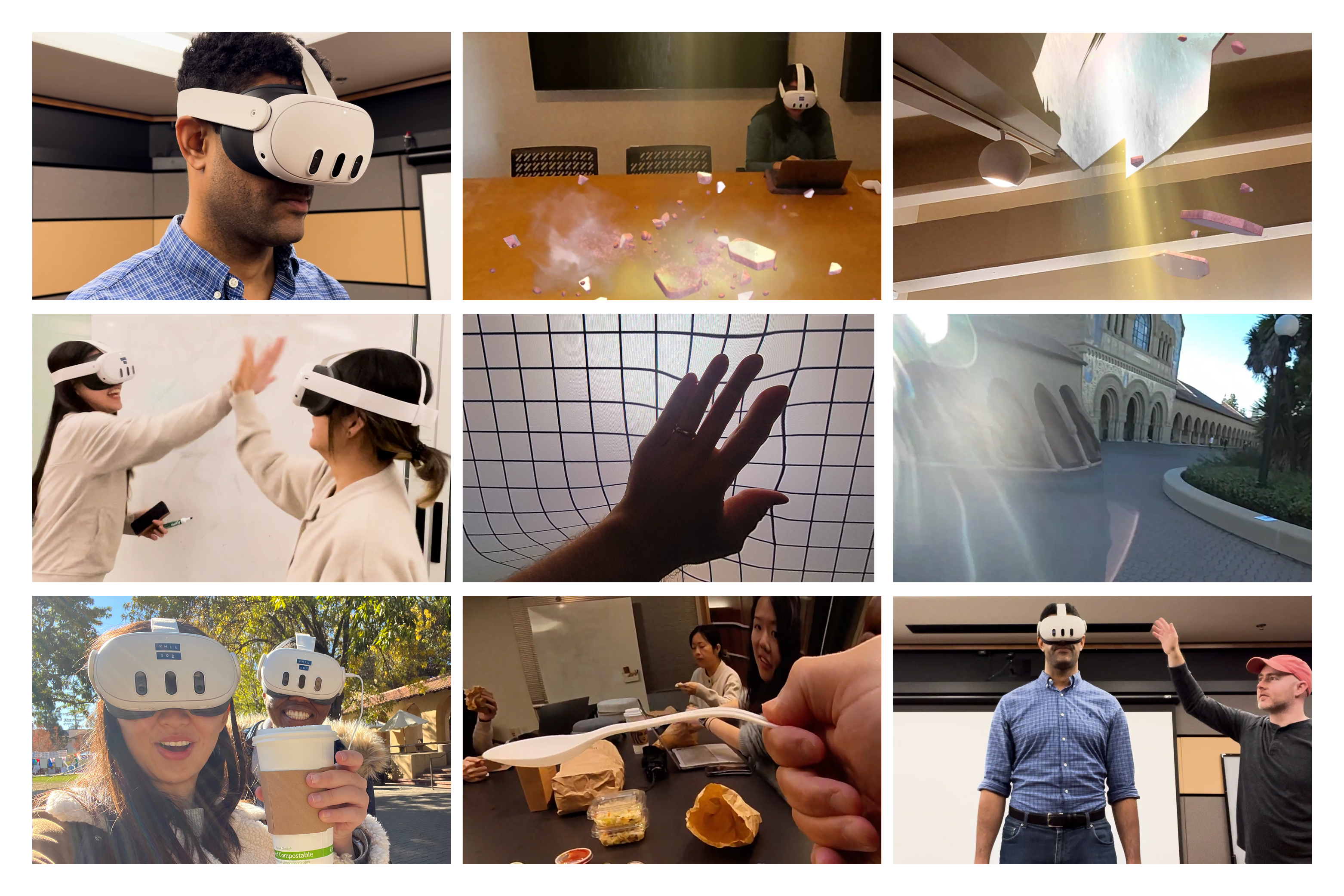Please don't wear the Apple Vision Pro while driving, study urges, but buying coffee with VR is an 'exciting novelty'
As Apple launched its Vision Pro headset, scientists investigated what life would be like living through the prism of a VR headset's 'passthrough' mode.

Scientists have tested what life is like when using mixed reality goggles, and the technology's effects on a wearer. Turns out, even state-of-the-art headsets can cause some considerable issues.
Mixed reality could soon become mainstream following the release of Apple's Vision Pro this year, alongside existing tech such as Meta's Quest 3. These devices have a "passthrough" mode that shows wearers real-time video footage captured by front-facing cameras and augmented with a digital interface. It incorporates both virtual reality (VR) and augmented reality (AR) — essentially mixing the digital and physical worlds.
Since Apple's Vision Pro launched, footage has emerged showing people walking around town or even driving while wearing the VR headset. It has led Apple to officially warn people against using it while operating vehicles, according to the company's user guide.
But with the technology becoming better and more available, scientists tested whether people could live their lives using VR in passthrough mode. They published their findings on Feb. 1 in the journal Technology Mind and Behavior.
Lead author Jeremy Bailenson, professor of communications at Stanford, said it was the right time to conduct this research because of how much the technology has advanced in recent years.

"We first tried a VR experience on the Meta Quest 3 In October 2023 and found it used passthrough video much more effectively than previous commercial headsets," Bailenson told Live Science. "We then tried a number of others including the Apple Vision Pro, and, given how far passthrough video has come, it was time to dedicate serious academic thought to the psychological and behavioral effects."
Get the world’s most fascinating discoveries delivered straight to your inbox.
In the study, the 11 co-authors spent several hours wearing VR headsets in passthrough mode while interacting with peers, reading, eating and other activities. Their goal was to document their experiences and add this to the growing body of research so they could help future studies understand the psychological and physiological effects.
The researchers found that the effects were both positive and negative, with participants describing interactions with people and buying coffee while wearing VR headsets as an exciting novelty. The biggest and most obvious negative, however, was the loss of peripheral vision — the headsets cut the users' field of vision down to about half.
Despite how far the technology has come in recent years, recorded video footage still isn't as sharp as the human eye, the study found. Changes in light also caused "funhouse mirror-style distortions," the scientists said in their paper. Head movements, meanwhile, had a noticeable lag, and the wearers couldn't accurately judge distances at close range This complicated otherwise-simple tasks like eating or touching a nearby object.
Participants learned to compensate for the distortions and lag, but the study noted that prolonged use might cause residual overcompensation — meaning people would tend to compensate for the headset's effects even when they're not wearing the device. There's also the risk of experiencing simulator sickness, which can often occur during VR use, according to a 2018 paper published in the journal Frontiers in Psychology.
For tasks that weren't time- or spatially-sensitive, or where the consequences of failure were minor — such as missing your mouth with a spoonful of food — the technology was fun, albeit with performance gaps, Bailenson said. But where spatial awareness was critical, such as when walking down stairs or driving, the study found the tech's imperfections posed problems during frequent use.
"To anyone who works at Apple and Meta; do the right thing. You can save lives. Headsets should not work in moving cars," he told Live Science — referencing an article he wrote for TechCrunch, in which he said BMW is "actively promoting VR for drivers."
The scientists concluded that further research was needed, especially because this study only assessed short-term use, with prolonged use over time needing an appropriate study design. The scientists also urged users to take "baby steps" and adjust to the medium gradually rather than wearing them for extended periods from the start.
Bailenson said users and headset manufacturers should build controls and methods into the devices to ensure users take adequate breaks and reduce the amount of time they spend wearing VR headsets.
Drew is a freelance science and technology journalist with 20 years of experience. After growing up knowing he wanted to change the world, he realized it was easier to write about other people changing it instead. As an expert in science and technology for decades, he’s written everything from reviews of the latest smartphones to deep dives into data centers, cloud computing, security, AI, mixed reality and everything in between.




